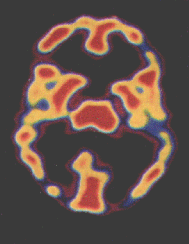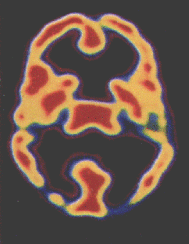


| "Russia is a distinguished place in terms of science
development, but right now it is experiencing problems with financing and
brain drain". Ch. Towns Honorary Professor of California University, the Nobel Prize laureate (US) (speech in S. Petersburg, 20 June 2003) |
Research into learning and teaching Radiochemistry at the higher level has been undertaken to introduce the uses of different form of knowledge Nuclear Medicine at medicine, biology, chemistry and physics undergraduate. It’s planned that the new lecture course on the Nuclear Medicine could take place in the Universities of Saint Petersburg and Moscow during 2003/2004. The necessity for it’s presentation to the students of the Russian Institutions of Higher Education ripened long ago, but only now has it become possible to bring in the special modern lecture course on Nuclear Medicine, not as one of the sections of Radioecology or Radiochemistry, indeed. At the same time an educational supply the textbook Radiochemistry* is getting ready to be published, the special place in it given to detailed description of Nuclear Medicine’s and Radiobiology’s problems, which were lightened up superficially in chapters devoted to Radioecology in the past.1,2,3
As a well-known educational supply stimulates students’ and public’s interest to Science as usual, but we must underline the results in the case of using systematic lecture methodology, as the main form of teaching. The method of teaching could be effective in preparing students, specialists, curious and common people and helpful in improving student’s knowledge at the scientific and technical level in the case of professional development for lecturers and student motivation and retention. Exactly the excellent presentation of the new lecture course on Nuclear Medicine is most closely connected with “panacea” of psychological, pedagogical influence on students’ education during learning and teaching Radiochemistry. Above all, the goal of success is the teacher speech.4
It’s very important to teach Nuclear Medicine because students must be introduced to aspects of Radiochemistry and Nuclear Chemistry including:
We must remember the dramatic sequels of the accidents at the Atomic Energy Power Stations (AEPS); for example, at the Plutonium factory in 1957 (UK), at the Southern Ural in 1957 (Russia), at the “Three Mile Island” AEPS (USA) and at the Chernobyl AEPS in 1986 (Ukraine). Totally there were more than 400 accidents while AEPS were in service and a lot of incidents in throw-out or uncontrolled wastages of radionuclides in atmosphere. During the most dangerous Chernobyl AEPS’s accident 3,5% of fuel from the active reactor’s zone were thrown out (the quantity was equal to 6 ton and there were about 450 different types of radionuclides; moreover the accumulation of radioactive Uranium division fragments was maximum; that’s made about 2000 MCurie). The accident (catastrophe) was unusual because the hot elements arose from oxides and carbides of some uncommon metals with very high activity (theoretically radioactivity of hot elements can make up 10 Curie by 1 element).5 It’s very difficult to wash away these kind of hot elements from the plants and soil’s surface.
2057 nuclear explosions were tested in 1945-1995 in 90 parts of the world, 1547 were subterranean.6 The balance of 14C and 3H in atmosphere were heavily destroyed by the explosions. As is well known the nucleotides 3H, 14C can enter into DNA structures.7 DNA molecules’ conjunctions have broken up as a result of disintegration and carbene or/and other ion formation, so the genetically destructive irreversible processes took place.8
The environment becomes heavily degraded by acting of the nuclear industries waste. Radioactive waste (refuse) in any kind of treatment is evaluated about 5.5. 1019 Bq in Russia.9
According to the scientific reports about 90% of population lives in places with annual level of normal radiation 0.3-0.6 MSv, 3% of it takes 1 MSv a year and more than 1.5% of it received higher than 1.4 MSv a year. The degree of existent radioactive background is constant. 2 MSv a year is adopted as annual equivalent effective dose at the beginning of 1982. Normal sources of irradiation make up the inhabitants’ expose dose: It’s equal to 2.4 MSv a year in all (average datum in the world), it’s 2,3 MSv in Russia (mean quantity). Moreover anthrop genetic sources including the medicine procedures (1 MSv a year) /Please, compare with the Nuclear Energy (0.001 MSv a year)/ make up such dose about 3.4 MSv a year (average value in the world) and 4 MSv a year in Russia (report data of 1993).10
So, k is a coefficient taking into “account” the perceptibility of human organs to the effective dose of irradiation according to the equation Def =∑ D e, T k. k is characteristic of the heightened level of risk when the cerebrum is being irradiated (k=0.15). /it’s in comparison with the skin’s perceptibility which is much lower (k=0.01)/.11
The sources of radiation make up 16.5% or 40 MBq in Medical treatment in comparison with Atomic Power Engineering carries in 0,041%, 0.001 MSv a year or 0.1 MBr.12
The study of acting of human brain under the ionizing radiation occupies the most progressive scientific field of Radioecology and Medicine. The human brain is still a mystery of the century. The nuclear medicine studies are required more than 50% of production of radionuclides (in a year). It needs to diagnose and treat with radiation for medical and scientific applying all over the world. The quantity of therapeutic procedures makes 0.3% of diagnostic diseases, in the 80’s the quantity of the investigations using different radioactive nucleus in industrial developed countries made up about 10 by 10.000 of population. After studying the linkage of biomolecules signed by radionuclides or applying radioactive and pharmaceutical technique (tumours and metastases, inflammatory breeding grounds etc. in cerebrum, in liver and so on) one can also study organ’s functional state and their topographical peculiarities. The positron emissive tomography (PET) is one of the effective methods of investigation. This method uses short lived positron radionuclides radiating, their registration is held according to the annihilative gamma ray emission, such as 11С, 13N, 15O, 18F.There are 100 scientific centers in the world where PET technique is applied. In Russia such centers are situated in San Petersburg and in Moscow.13 In the case of using other open sources of radiation, such as βand αexposures in radioactive nuclide therapy, 188Re (T1/2 = 17 hours, βdisintegration (100%), the main line energy, γ155, max 2120 keV) is effective method of Nuclear Medicine; in particular cases it’s possible to treat cerebral and osseous metastases of carcinoma.14
In addition to the technique cited above and taking into account accumulated experience, the lecturer should introduce new interesting exiting examples of Radiochemistry into the teaching Nuclear Medicine and Radiobiology to encourage students’ and audience’s attention. The examples must be actual and clear. As is well known, even belief in God stimulates human brain. Exactly PET studies of brain under conditions of praying, conducted by A. Ruberg and E. Akvilly confirmed it. As shown in figure 1, the red section in the cerebrum correspond to active praying human brain (fig.1, left) and it’s occupied more space in the case of brain’s not praying (fig.1, right).15
Figure 1. PET studies of brain
in active praying status (left) and brain's not in praying (right)
The “cleverest” computer in complexity is second to human brain’s
mechanisms of activity.
There can be given the fact when Kasparov’ student Kramnik managed to gain the
unique result he made the draw with the “Deep Blue” computer (IBM). It’s astonished
that the computer can solve 200 million answers to the chess move in a second
and a person can think over 3 moves (Kasparov). By comparison, the possible
number of answers of moves in chess is 1 and 120 zeros after it; or the universe
consists of the elements which number is 1 and 78 zeros after it. The computer
lacks creative and emotional aspects of human brain.16
The students could using the lecture course on Radiochemistry for Nuclear Medicine and Radiobiology in the case it’ll be possible to produce tutorial material on the web site.